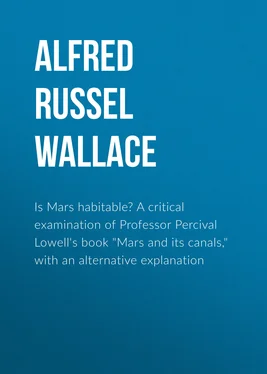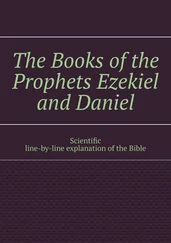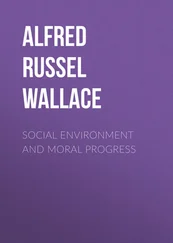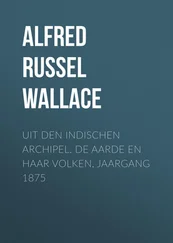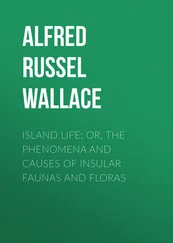Alfred Wallace - Is Mars habitable? A critical examination of Professor Percival Lowell's book Mars and its canals, with an alternative explanation
Здесь есть возможность читать онлайн «Alfred Wallace - Is Mars habitable? A critical examination of Professor Percival Lowell's book Mars and its canals, with an alternative explanation» — ознакомительный отрывок электронной книги совершенно бесплатно, а после прочтения отрывка купить полную версию. В некоторых случаях можно слушать аудио, скачать через торрент в формате fb2 и присутствует краткое содержание. Издательство: Иностранный паблик, Жанр: foreign_edu, Физика, на английском языке. Описание произведения, (предисловие) а так же отзывы посетителей доступны на портале библиотеки ЛибКат.
- Название:Is Mars habitable? A critical examination of Professor Percival Lowell's book Mars and its canals, with an alternative explanation
- Автор:
- Издательство:Иностранный паблик
- Жанр:
- Год:неизвестен
- ISBN:нет данных
- Рейтинг книги:5 / 5. Голосов: 1
-
Избранное:Добавить в избранное
- Отзывы:
-
Ваша оценка:
- 100
- 1
- 2
- 3
- 4
- 5
Is Mars habitable? A critical examination of Professor Percival Lowell's book Mars and its canals, with an alternative explanation: краткое содержание, описание и аннотация
Предлагаем к чтению аннотацию, описание, краткое содержание или предисловие (зависит от того, что написал сам автор книги «Is Mars habitable? A critical examination of Professor Percival Lowell's book Mars and its canals, with an alternative explanation»). Если вы не нашли необходимую информацию о книге — напишите в комментариях, мы постараемся отыскать её.
Is Mars habitable? A critical examination of Professor Percival Lowell's book Mars and its canals, with an alternative explanation — читать онлайн ознакомительный отрывок
Ниже представлен текст книги, разбитый по страницам. Система сохранения места последней прочитанной страницы, позволяет с удобством читать онлайн бесплатно книгу «Is Mars habitable? A critical examination of Professor Percival Lowell's book Mars and its canals, with an alternative explanation», без необходимости каждый раз заново искать на чём Вы остановились. Поставьте закладку, и сможете в любой момент перейти на страницу, на которой закончили чтение.
Интервал:
Закладка:
The rapid and comparatively early disappearance of the white covering is, very reasonably, supposed to prove that it is of small thickness, corresponding perhaps to about a foot or two of snow in north-temperate America and Europe, and that by the increasing amount of sun-heat it is converted, partly into liquid and partly into vapour. Coincident with this disappearance and as a presumed result of the water (or other liquid) producing inundations, the bluish-green tinge which appears on the previously dark portion of the surface is supposed to be due to a rapid growth of vegetation.
But the evidence on this point does not seem to be clear or harmonious, for in the four coloured plates showing the planet's surface at successive Martian dates from December 30th to February 21st, not only is a considerable extent of the south temperate zone shown to change rapidly from bluish-green to chocolate-brown and then again to bluish-green, but the portions furthest from the supposed fertilising overflow are permanently green, as are also considerable portions in the opposite or northern hemisphere, which one would think would then be completely dried up.
No Hills upon Mars.
The special point to which I here wish to call attention is this. Mr. Lowell's main contention is, that the surface of Mars is wonderfully smooth and level. Not only are there no mountains, but there are no hills or valleys or plateaux. This assumption is absolutely essential to support the other great assumption, that the wonderful network of perfectly straight lines over nearly the whole surface of the planet are irrigation canals. It is not alleged that irregularities or undulations of a few hundreds or even one or two thousands of feet could possibly be detected, while certainly all we know of planetary formation or structure point strongly towards some inequalities of surface. Mr. Lowell admits that the dark portions of the surface, when examined on the terminator (the margin of the illuminated portion), do look like hollows and may be the beds of dried-up seas; yet the supposed canals run across these old sea-beds in perfect straight lines just as they do across the many thousand miles of what are admitted to be deserts—which he describes in these forcible terms: "Pitiless as our deserts are, they are but faint forecasts of the state of things existent on Mars at the present time."
It appears, then, that Mr. Lowell has to face this dilemma— Only if the whole surface of Mars is an almost perfect level could the enormous network of straight canals, each from hundreds to thousands of miles long, have been possibly constructed by intelligent beings for purposes of irrigation; but, if a complete and universal level surface exists no such system would be necessary. For on a level surface—or on a surface slightly inclined from the poles towards the equator, which would be advantageous in either case—the melting water would of itself spread over the ground and naturally irrigate as much of the surface as it was possible for it to reach. If the surface were not level, but consisted of slight elevations and expressions to the extent of a few scores or a few hundreds of feet, then there would be no possible advantage in cutting straight troughs through these elevations in various directions with water flowing at the bottom of them. In neither case, and in hardly any conceivable case, could these perfectly straight canals, cutting across each other in every direction and at very varying angles, be of any use, or be the work of an intelligent race, if any such race could possibly have been developed under the adverse conditions which exist in Mars.
The Scanty Water-supply.
But further, if there were any superfluity of water derived from the melting snow beyond what was sufficient to moisten the hollows indicated by the darker portions of the surface, which at the time the water reaches them acquire a green tint (a superfluity under the circumstances highly improbable), that superfluity could be best utilised by widening, however little, the borders to which natural overflow had carried it. Any attempt to make that scanty surplus, by means of overflowing canals, travel across the equator into the opposite hemisphere, through such a terrible desert region and exposed to such a cloudless sky as Mr. Lowell describes, would be the work of a body of madmen rather than of intelligent beings. It may be safely asserted that not one drop of water would escape evaporation or insoak at even a hundred miles from its source. 5 5 What the evaporation is likely to be in Mars may be estimated by the fact, stated by Professor J.W. Gregory in his recent volume on 'Australia' in Stanford's Compendium , that in North-West Victoria evaporation is at the rate of ten feet per annum, while in Central Australia it is very much more. The greatly diminished atmospheric pressure in Mars will probably more than balance the loss of sun-heat in producing rapid evaporation.
Miss Clerke on the Scanty Water-supply.
On this point I am supported by no less an authority than the historian of modern astronomy, the late Miss Agnes Clerke. In the Edinburgh Review (of October 1896) there is an article entitled 'New Views about Mars,' exhibiting the writer's characteristic fulness of knowledge and charm of style. Speaking of Mr. Lowell's idea of the 'canals' carrying the surplus water across the equator, far into the opposite hemisphere, for purposes of irrigation there (which we see he again states in the present volume), Miss Clerke writes: "We can hardly imagine so shrewd a people as the irrigators of Thule and Hellas 6 6 Areas on Mars so named.
wasting labour, and the life-giving fluid, after so unprofitable a fashion. There is every reason to believe that the Martian snow-caps are quite flimsy structures. Their material might be called snow soufflé , since, owing to the small power of gravity on Mars, snow is almost three times lighter there than here. Consequently, its own weight can have very little effect in rendering it compact. Nor, indeed, is there time for much settling down. The calotte does not form until several months after the winter solstice, and it begins to melt, as a rule, shortly after the vernal equinox. (The interval between these two epochs in the southern hemisphere of Mars is 176 days.) The snow lies on the ground, at the outside, a couple of months. At times it melts while it is still fresh fallen. Thus, at the opposition of 1881-82 the spreading of the northern snows was delayed until seven weeks after the equinox: and they had, accordingly, no sooner reached their maximum than they began to decline. And Professor Pickering's photographs of April 9th and 10th, 1890, proved that the southern calotte may assume its definitive proportions in a single night.
"No attempt has yet been made to estimate the quantity of water derivable from the melting of one of these formations; yet the experiment is worth trying as a help towards defining ideas. Let us grant that the average depth of snow in them, of the delicate Martian kind, is twenty feet, equivalent at the most to one foot of water. The maximum area covered, of 2,400,000 square miles, is nearly equal to that of the United States, while the whole globe of Mars measures 55,500,000 square miles, of which one-third, on the present hypothesis, is under cultivation, and in need of water. Nearly the whole of the dark areas, as we know, are situated in the southern hemisphere, of which they extend over, at the very least, 17,000,000 square miles; that is to say, they cover an area, in round numbers, seven times that of the snow-cap. Only one-seventh of a foot of water, accordingly, could possibly be made available for their fertilisation, supposing them to get the entire advantage of the spring freshet. Upon a stint of less than two inches of water these fertile lands are expected to flourish and bear abundant crops; and since they completely enclose the polar area they are necessarily served first. The great emissaries for carrying off the surplus of their aqueous riches, would then appear to be superfluous constructions, nor is it likely that the share in those riches due to the canals and oases, intricately dividing up the wide, dry, continental plains, can ever be realised.
Читать дальшеИнтервал:
Закладка:
Похожие книги на «Is Mars habitable? A critical examination of Professor Percival Lowell's book Mars and its canals, with an alternative explanation»
Представляем Вашему вниманию похожие книги на «Is Mars habitable? A critical examination of Professor Percival Lowell's book Mars and its canals, with an alternative explanation» списком для выбора. Мы отобрали схожую по названию и смыслу литературу в надежде предоставить читателям больше вариантов отыскать новые, интересные, ещё непрочитанные произведения.
Обсуждение, отзывы о книге «Is Mars habitable? A critical examination of Professor Percival Lowell's book Mars and its canals, with an alternative explanation» и просто собственные мнения читателей. Оставьте ваши комментарии, напишите, что Вы думаете о произведении, его смысле или главных героях. Укажите что конкретно понравилось, а что нет, и почему Вы так считаете.
